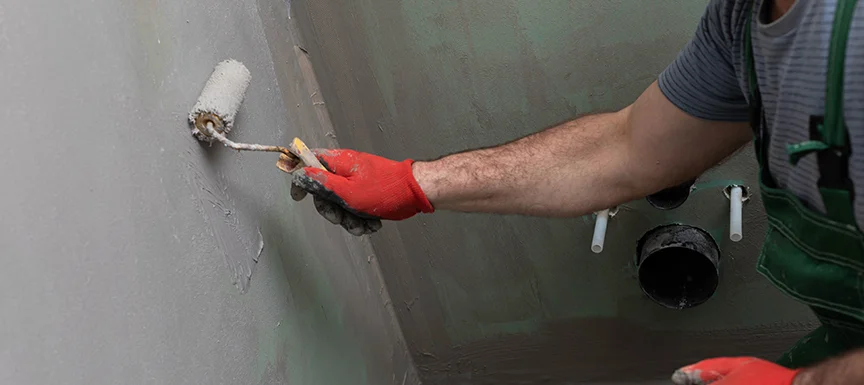Waterproofing toilet floor surfaces represents a fascinating intersection between human engineering and the fundamental behaviour of water molecules, a battle as ancient as our species’ first attempts to create permanent shelter. As a biologist observing human habitats, I have long noted that the most successful dwellings, like the most successful organisms, are those that have evolved proper defences against environmental threats. Water, that essential compound comprising two hydrogen atoms bonded to one oxygen atom, possesses properties that make it simultaneously life-giving and structure-destroying. Understanding this duality proves essential to maintaining the integrity of our domestic spaces.
The Molecular Nature of Water’s Destructive Power
Water exhibits remarkable properties that stem from its molecular structure. The polar nature of H₂O molecules creates powerful adhesive and cohesive forces, allowing water to penetrate microscopic fissures through capillary action, much as tree roots exploit tiny cracks in stone. Once inside structural materials, water initiates cascading chemical and biological processes. In Singapore’s tropical climate, where relative humidity regularly exceeds 80 per cent, the Building and Construction Authority recognizes this threat, stipulating that “waterproofing shall be applied to toilet floors and extended up walls to prevent moisture migration to adjacent spaces and structural elements below.”
The temperature variations in our built environment create additional challenges. As water molecules transition between liquid and vapour states, they generate pressure differentials that accelerate material degradation. This continuous cycling, observed across thousands of iterations, produces cumulative damage far exceeding what any single event might cause.
The Microbial Ecosystem of Neglected Bathrooms
Perhaps nowhere in the human habitat does one observe such rapid colonization by microbial life as in inadequately waterproof toilet floors. The genus Aspergillus, various Penicillium species, and the particularly problematic Stachybotrys chartarum find ideal conditions in moisture-saturated substrates. These organisms, though microscopic, demonstrate remarkable efficiency in degrading organic materials and producing allergens that affect human respiratory systems.
This microbial ecosystem establishes itself through predictable succession. Pioneer species colonize damp surfaces within 24 to 48 hours of moisture exposure. As these organisms metabolize building materials and multiply, they create conditions favourable for secondary colonizers. Within weeks, a complex community structure emerges, complete with competitive interactions and niche specialization. The spores these organisms release number in the millions, dispersing throughout the home’s atmosphere and settling in human lungs.
Observable Warning Signs in Your Habitat
Natural selection has equipped humans with sophisticated sensory apparatus for detecting environmental threats. Your bathroom offers numerous signals that waterproofing toilet floor systems have failed:
- Olfactory detection of volatile organic compounds produced by fungal metabolism, perceived as musty odours
- Visual observation of discolouration patterns on ceilings below, indicating moisture migration
- Tactile detection of substrate degradation through soft or yielding floor surfaces
- Auditory hollowness when percussing tiles, suggesting delamination from substrate
- Chromatic changes in grout lines, indicating biological colonization or chemical alteration
The Ecology of Water Containment Systems
Effective toilet floor waterproofing creates what ecologists might term a “exclusion barrier,” analogous to cell membranes that selectively control molecular passage. Modern waterproofing membranes function through similar principles of selective permeability, blocking liquid water whilst allowing water vapour to escape at controlled rates. This prevents hydrostatic pressure accumulation that could compromise the barrier’s integrity.
The system’s architecture must account for what I term “critical transition zones,” areas where different materials or planes intersect. The floor-to-wall junction represents the primary vulnerability, experiencing maximum stress from both structural movement and water accumulation. Singapore’s building codes mandate minimum 150 millimetre upstands at these junctures, recognition that nature exploits every weakness in our defences.
Penetrations through the waterproofed surface, whether for waste discharge or water supply, create ecological edge effects. These boundaries between protected and exposed zones require specialized detailing, much as organisms develop thickened cell walls at points of environmental stress.
Material Selection Through an Evolutionary Lens
The development of waterproofing materials demonstrates convergent evolution toward optimal solutions. Liquid-applied membranes, sheet systems, and cementitious coatings each represent different adaptive strategies, suited to specific environmental pressures. Selection criteria mirror natural selection’s parameters:
- Flexibility allows accommodation of substrate movement, analogous to cellular elasticity
- Chemical resistance ensures survival in hostile environments rich in cleaning agents
- Tensile strength provides resistance to physical disruption during subsequent construction
- Impermeability under pressure prevents water infiltration across concentration gradients
In Singapore’s tropical ecosystem, materials must additionally withstand sustained high humidity, elevated temperatures, and rapid biological colonization attempts. Products meeting local certification standards have survived rigorous testing protocols that simulate years of environmental exposure.
The Symbiosis Between Preparation and Performance
Observing countless waterproofing toilet floor installations reveals a consistent pattern: success correlates strongly with substrate preparation quality. The relationship between membrane and substrate resembles symbiotic partnerships in nature, where both components must contribute for the system to thrive. A poorly prepared surface, contaminated with dust, oils, or moisture, prevents proper adhesion, much as unsuitable host conditions prevent beneficial bacteria from colonizing intestinal walls.
Curing represents another critical phase in system development. Waterproofing membranes undergo chemical or physical transformations that require specific time and environmental conditions. Interrupting this process produces incomplete maturation, leaving the system vulnerable to premature failure. Nature teaches patience in development, whether observing a butterfly’s emergence or a membrane’s cure.
Conclusion: The Wisdom of Prophylactic Investment
Throughout the natural world, organisms invest substantial resources in protective structures: bark shields trees, exoskeletons protect arthropods, and immune systems defend mammals. These investments prove economical across evolutionary time because prevention costs less than cure. The same principle governs waterproofing toilet floor protection. Initial installation represents modest resource allocation compared to remedial intervention after failure. In our constructed habitats, as in nature’s ecosystems, the wisest strategy involves establishing robust defences before threats materialize.

